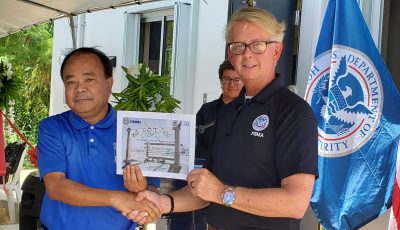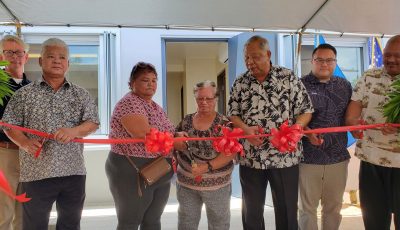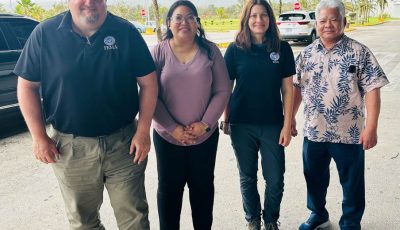GAO: AS OF OCTOBER 2020
FEMA obligated $877M for 2018 disasters
Yet only 30% of homes completed in CNMI
As of October 2020, the Federal Emergency Management Agency has obligated $877 million—more than 70% for individual and public assistance missions—following the 2018 natural disasters in the CNMI, Guam, and Hawaii, yet it has not fully addressed housing assistance issues in the CNMI, according to a new report from the U.S. Government Accountability Office.
For example, FEMA experienced delays implementing its Permanent Housing Construction program in the CNMI due to contracting shortfalls and lack of experienced staff. As of October 2020, only about 30% of homes were completed and returned to survivors. GAO found that these housing assistance challenges are consistent with lessons learned from prior FEMA missions in other remote areas of the U.S. The GAO report said that developing guidance that addresses lessons learned in the Permanent Housing Construction program could help streamline assistance to disaster survivors.
GAO also identified delays in FEMA’s obligation of Public Assistance program funds—used to repair or replace disaster-damaged public infrastructure such as utilities, roads, and schools—in the CNMI, Guam, and Hawaii. Specifically, on average, it took over a year for FEMA to approve funds for projects awarded after the 2018 disasters. FEMA and local officials identified potential reasons for the delays, including cost estimation challenges. FEMA established cost factors in the CNMI to account for higher construction costs, and GAO found that FEMA collects some data on the timeliness of individual steps in the process. However, FEMA has not analyzed the data to help identify causes of the delays, which could allow it to target solutions to address them.
The CNMI, Guam, and Hawaii experienced an unprecedented number of natural disasters in 2018—including typhoons, earthquakes, mudslides, and volcanic eruptions. GAO, which is the investigative arm of U.S. Congress, examined how FEMA and its federal partners prepared for and responded to these disasters, including Super Typhoon Yutu and Typhoon Mangkhut.
FEMA has worked to address these challenges, but it could improve disaster recovery in several areas. For instance, the agency could provide speedier housing assistance to survivors. GAO recommended, among other things, that FEMA streamline its housing assistance process.
In GAO’s February 2021 study, GAO Homeland Security and Justice director Chris P. Currie said FEMA had obligated $877 million from the Disaster Relief Fund for disaster assistance in the CNMI, Guam, and Hawaii as of October 2020. FEMA obligated approximately $664 million from the Disaster Relief Fund for disaster response and recovery activities in the CNMI.
Citing FEMA’s data, Currie said FEMA, state, and territorial governments had expended approximately $549 million of this funding. He said as of October 2020, FEMA projected that the agency will obligate an additional $372 million in Disaster Relief Funds for these disaster events.
The director said that, according to FEMA’s data, the majority of these additional funds—about $235 million—will be obligated through the Individual Assistance and Public Assistance programs.



























